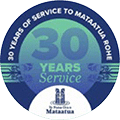Kaumātua Kōrero
Wiremu Huta-Martin
He rokiroki, he penapena, he ra kai whenua.
By conservation and preservation the food gathering days are easily sustainable.
- Home
- Kaumātua Kōrero
Wiremu Huta-Martin
Wiremu Huta-Martin spent a lot of his childhood gathering kai throughout Ngāti Pūkeko, Ngāti Awa and Te Whakatōhea.
As a tama, with the guidance of his kuia and koroua and māmā and pāpā, Wiremu soon learned mātauranga mahinga kai – a significant concept for Māori which relates to the traditional value of food resources and their systems, as well as the practices involved in producing, harvesting and protecting those resources.
In the series of kaumātua kōrero below, Wiremu shares some of his experiences gathering tuna from the drains of Poroporo (Ngāti Pūkeko) and the Rangitāiki and Ohinemataroa awa (Ngāti Awa) as well as memories from the hills and ngahere at Hinahinanui and waterways of Ōpape (Te Whakatōhea).
It was this matauranga and experience that sparked his lifelong passion of understanding the survival of species and their journeys, using skills they possess to avoid human made dangers and predators.
Some of his earliest mahinga kai memories are from his time with his koroua and kuia at Hinahinanui (Te Whakatōhea), in particular collecting hēki manu for the kai table. Though not a regular menu item these days, a source of meat that Wiremu’s kuia requested needed to be collected at the right time.
While staying with his grandparents at Hinahinanui, kaimoana regularly supplemented the kai table. Diving, fishing and crab hunting were Wiremu’s earliest memories of kaimoana gathering, a time when he gained valuable knowledge about the waterways.
From the Hinahinanui hills Wiremu would travel on a horse trailer to his favourite haunt – Morrison’s Bay – for pāua diving. They would also travel to Ōpape to fish off the rocks for snapper, Hiwihiwi (cod) and Tāhanahana (spotties).
Understanding the tides was one of the first lessons Wiremu learned to navigate.
At night, using an oil rag as a lamp, Wiremu would hunt for crabs around the rocks but only when the tide allowed. It was this type of hunting that taught Wiremu the importance of moving fast, getting in and getting out. To Wiremu, the crabs were a delicious and plentiful source of kai.
Tuna was also a regular kai source at Ōpape but Wiremu’s grandfather had an unusual way of catching them.
While learning about the environments kai sources thrived in, Wiremu saw many tuna in their natural water environment and was familiar with their usual habitat until one night camping in the Hinahinanui mountains with his koro and uncle.
It was this once in a lifetime experience that he has never forgotten – an absolute surprise to a very curious and inquisitive young boy.
That overnight camp was a first and last of another experience for Wiremu, this time a kai source. It started with another rustle and the Tūhoe nod from his koro before he made a catch, cooked and ate a particular species he hadn’t tried before.
To Wiremu, kai is kai but this particular kai he has since gladly let walk on by.
From Hinahinanui, Wiremu moved back to Pāhou (Ngāti Pūkeko) where his pāpā introduced him to the many drains of Poroporo and the different ways of catching tuna.
As the eldest of 10 tamariki, Wiremu had the priviledged responsibility of gathering kai for the whānau. Tuna was his favourite kai to collect as it was the easiest, most plentiful and accessible at Poroporo. His favourite way of collecting tuna was with a number 8 wire spear, the method his pāpā taught him.
Wiremu would make a pīkau (backpack) from a sugar bag, he would use rope to create straps. The pīkau would carry his number 8 wire and a file to create the spear. It would also carry his catches home.
For whānau entertainment, Wiremu, his parents and siblings would make toi noke to catch tuna at night.
Toi noke is a method of catching tuna using muka to create a fishing line which is threaded with worms. Because tuna teeth are intertwined, they latch onto the noke and muka and can’t get away in a hurry.
Importantly, along with catching and gathering kai, Wiremu also learned the intergenerational practices, knowledge and tikanga used to hunt, gather and protect tuna and other kai sources.
Following the lead of his koro and pāpā, Wiremu has continued traditions into adulthood and taught them to his tamariki and mokopuna.
One of the biggest traditions was to practice patience and observation. To be successful with catches, Wiremu learned to observe what is happening in the waterways before making a catch. He adopts watching where the tuna, ika or whitebait are running instead of throwing in a line or net and hoping for the best.
Other practices include leaving the whenua the same way he found it – clean up after himself, don’t wreck anything, don’t dig too much and if and when he builds something, dismantle it.
To ensure the abundance of tuna remains, Wiremu’s grandfather taught him an important lesson. As a competitive taiohi, Wiremu wanted to catch the biggest tuna in the awa. After failed attempts to catch it, his grandfather told him to leave the biggest tuna, the rangatira, alone, and for good reason.
Due to the size of the tuna, nearly as long as their dinghy, Wiremu and his whānau would only need three tuna to feed the whānau.
“We used to pāwhara them and hang them up to dry. We needed to dry them because they were so fat. You would start vomiting if you tried to eat them with that much fat.”
The tuna would be cooked in the hangi, rather than fried.
“You can’t catch tuna that size these days.”
Reflecting on his learnings from his mātua and kaumātua and gathering kai for his whānau, Wiremu appreciated his childhood. Some teachings clicked instantly but others have taken him decades to understand. Either way, he has been able to pass on his mātauranga mahinga kai to his tamariki and mokopuna who can continue to guide and teach future generations.
“For me, as a hunter gatherer, there must always be a tomorrow for all species that are enjoyed on our hakari table. The species’ survival is paramount.”



